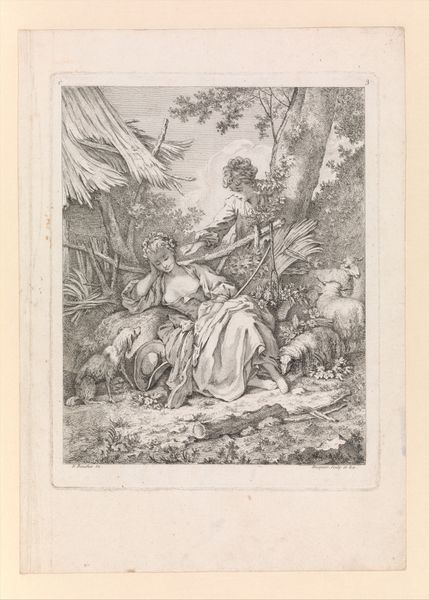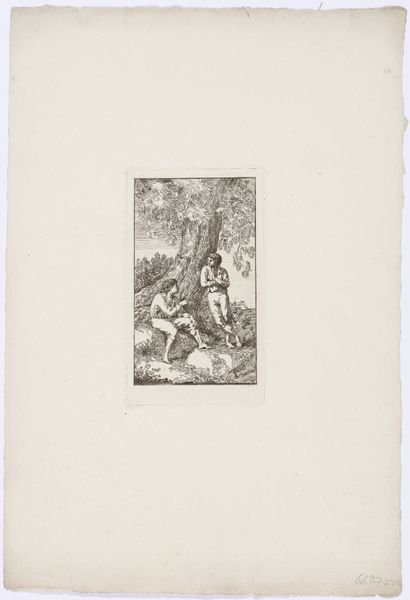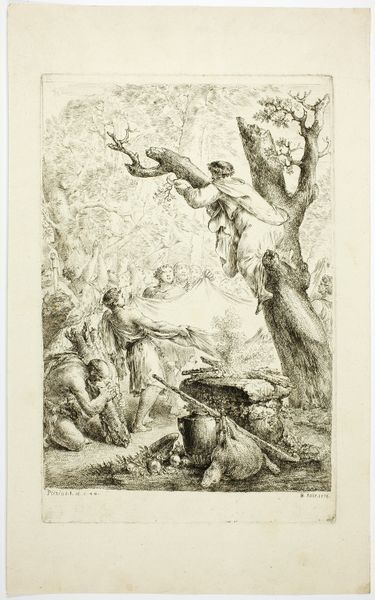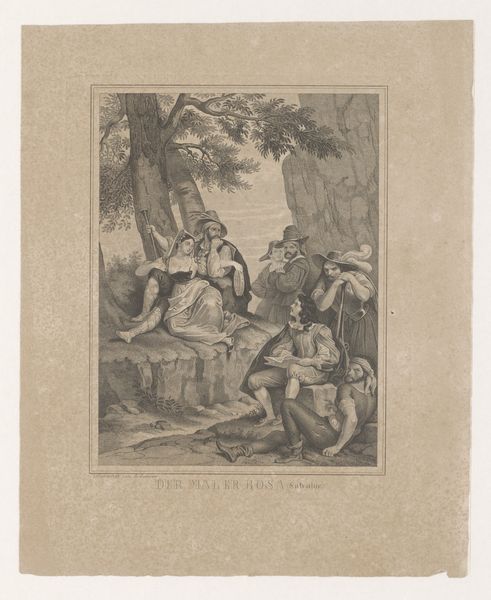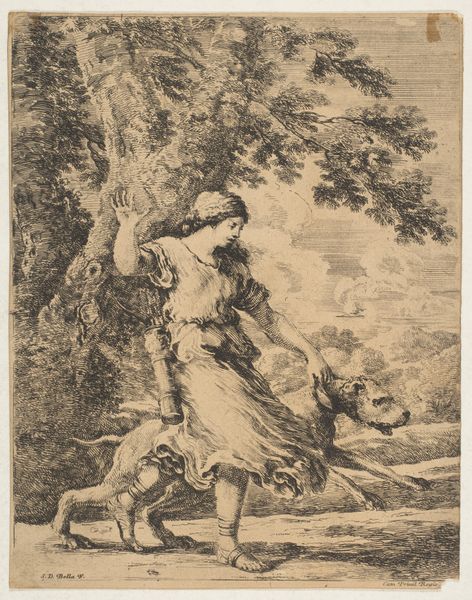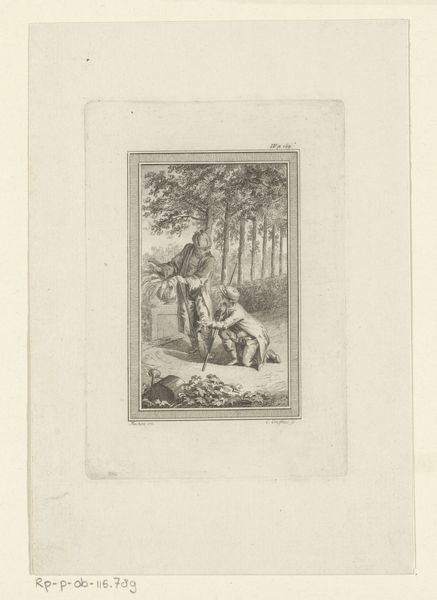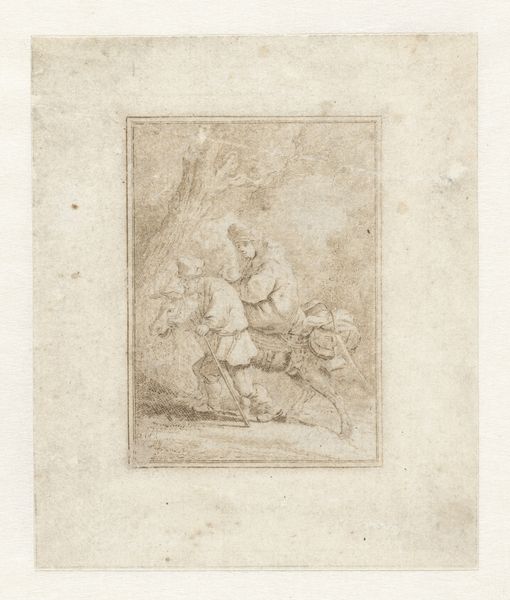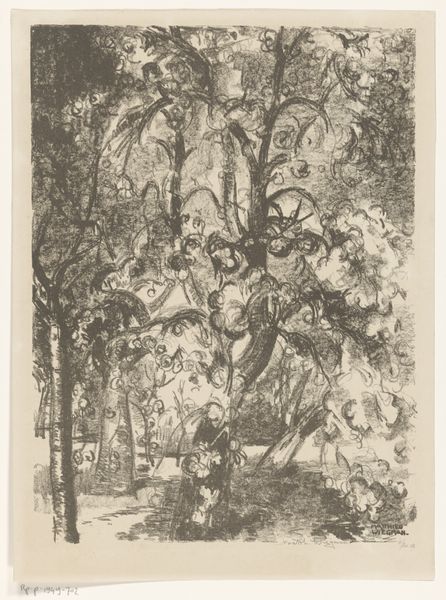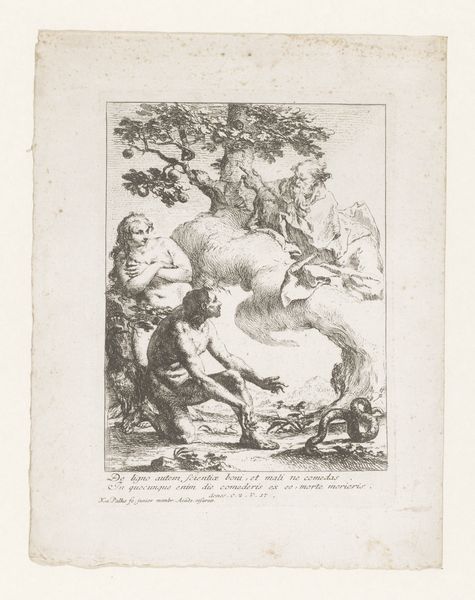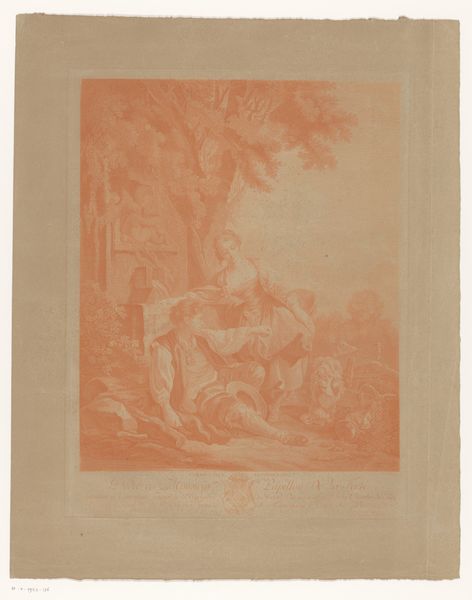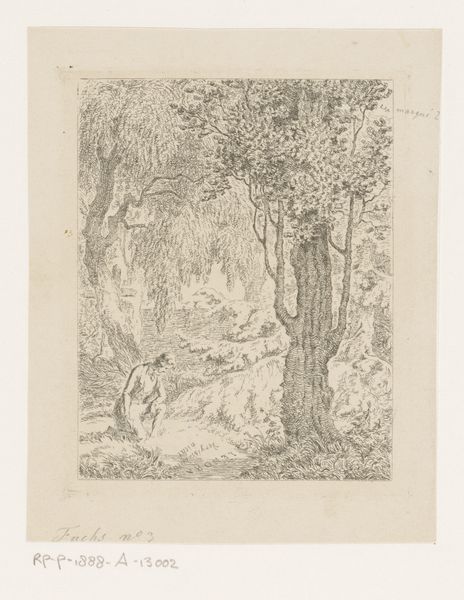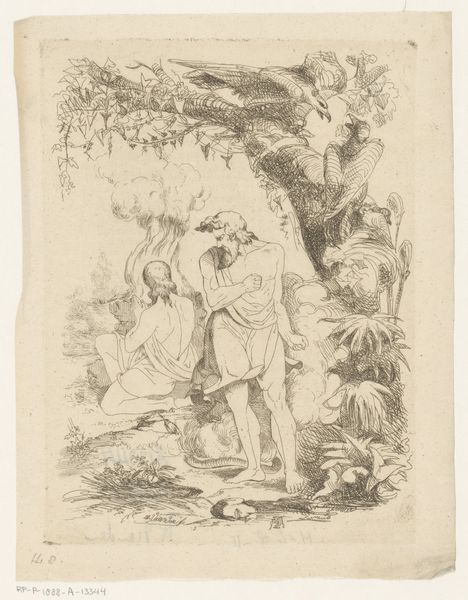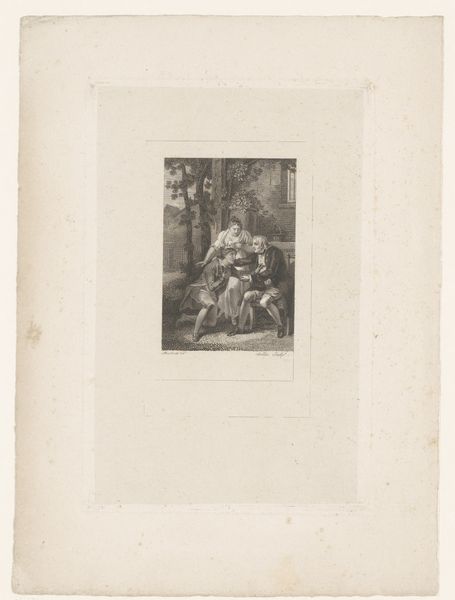
drawing, etching, pen
#
drawing
#
narrative-art
#
etching
#
landscape
#
etching
#
pen
#
history-painting
#
realism
Dimensions: height 451 mm, width 322 mm
Copyright: Rijks Museum: Open Domain
Curator: Let's look at this etching, "Johannes de evangelist op Patmos" by Adam von Bartsch, created in 1782. Editor: The work depicts Saint John on the Isle of Patmos. The landscape setting has an airy and bright feel. How do you interpret this work, especially considering its historical context? Curator: I see this not just as a religious depiction, but as a powerful statement on exile, resilience, and the act of bearing witness. John, banished to Patmos, doesn't simply endure; he *creates*. His isolation becomes a site of revelation and resistance. The etching, with its delicate lines, invites us to contemplate how marginalized voices throughout history have used art to challenge dominant narratives and to record experiences that would otherwise be lost. How do the historical and cultural contexts speak to contemporary power imbalances? Editor: That’s a very thought-provoking point. It makes me think about contemporary artists who create works while in exile, continuing to resist through their creative expression. How might the viewer draw meaning, thinking of contemporary examples of resistance? Curator: Precisely! Consider the work in relation to, for example, Ai Weiwei's activism through art. Both situations involved displacement and, significantly, artistic production in the face of oppression. By understanding Bartsch’s piece through a contemporary lens, we are prompted to ask, “Who is silenced today? And how can art serve as their voice?” Editor: So, it's about drawing parallels between historical and contemporary experiences of marginalization, and recognizing the enduring power of art as a tool for activism and documentation. Thanks! This really changes my understanding of the artwork! Curator: Yes, situating artworks within broader narratives empowers viewers to question societal norms, and appreciate the significance and cultural agency of individual and communal voices.
Comments
No comments
Be the first to comment and join the conversation on the ultimate creative platform.
